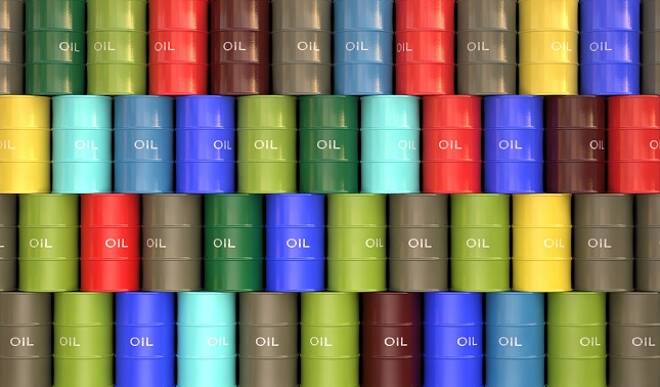Advertisement
Advertisement
Energy Influences: From Surprise Canadian Production Cuts to Qatar Leaving OPEC to Sunspots Predicting Cold Winter
By:
On Sunday that the Canadian province of Alberta ordered its producers to scale back output by 325,000 bpd until excess crude in storage is reduced. Crude traders were also surprised on Monday by the news that OPEC member Qatar would be leaving the organization on January 1. If more of the small producers decide to exit the cartel, it will decrease the power OPEC’s wields over the crude oil market. According to some scientists, if you want to track natural gas prices with more accuracy then it may be a good idea to follow sunspots.
The U.S. energy complex was one of the most volatile sectors in November, led by a steep drop in crude oil prices and a spike to the upside in natural gas. Both markets reacted to supply concerns. For crude oil, it was increasing supply due to rising output from Saudi Arabia, Russia and the United States. Natural gas was supported by a wide storage deficit. Lower demand due to a possible global economic slowdown also weighed on oil prices, while increased demand due to colder-than-average temperatures underpinned natural gas prices.
While the focus remains on the supply and demand situations for both energy commodities, some traders are paying attention to other events that may or may not have longer-term effects on the price action.
Crude Oil Supported by Potential OPEC Cuts, Surprise Reduction from Canada
The main narrative supporting crude oil this week is the expected joint effort by OPEC and Russia to withhold supply of between 1.0 and 1.4 million barrels per day in an effort to stabilize supply and prices. However, there is also surprise news on Sunday that the Canadian province of Alberta ordered its producers to scale back output by 325,000 bpd until excess crude in storage is reduced.
Alberta Premier Rachel Notley said on Sunday the government would force producers to cut output by 8.7 percent, or 325,000 bpd, until excess crude in storage is reduced.
The move is highly unusual for a market economy like Canada, but it was not without controversy. Apparently, several oil companies in Canada protested the move against Alberta’s mandated cuts in crude production. They warned about excessive government intervention even as the discount on Canadian crude narrowed sharply on the curtailment plan.
We’re not sure if producer push back will accomplish anything, but it’s something worth watching as it could have a negative impact on prices if the government rescinds the order.
Qatar Decides to Leave OPEC
Crude traders were also surprised on Monday by the news that OPEC member Qatar would be leaving the organization on January 1. This decision comes at a crucial time since the cartel is schedule to meet to discuss expected production cuts on December 6-7 in Vienna.
Although Qatar is a relatively small oil producer and its decision to end a 57-year relationship in OPEC is not expected to have a major influence on energy prices, it could be a signal that smaller producers are growing disgruntled with the way Saudi Arabia, the de facto leader of OPEC, does business. If more of the small producers decide to exit the cartel, it will decrease the power OPEC’s wields over the crude oil market.
Sunspots and Rising Natural Gas Prices
According to some scientists, if you want to track natural gas prices with more accuracy then it may be a good idea to follow sunspots. Apparently, sunspots wax and wane in roughly 11-year cycles and may offer clues for predicting weather patterns. Their theory states that the few the spots, the colder the winter in the Northern Hemisphere. Right now, the sun is spot free.
According to Matt Rogers, president of the Commodity Weather Group, LLC, “When fewer sunspots form, the field weakens and more cosmic rays get through to hit Earth. Then the chances go up that frigid air dropping out of the Arctic, as it often does during winter, will get trapped in eastern North America or Europe and bring on harsh episodes of shiver-inducing weather.”
About the Author
James Hyerczykauthor
James Hyerczyk is a U.S. based seasoned technical analyst and educator with over 40 years of experience in market analysis and trading, specializing in chart patterns and price movement. He is the author of two books on technical analysis and has a background in both futures and stock markets.
Advertisement
